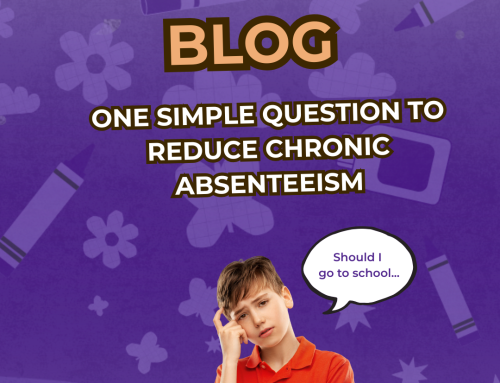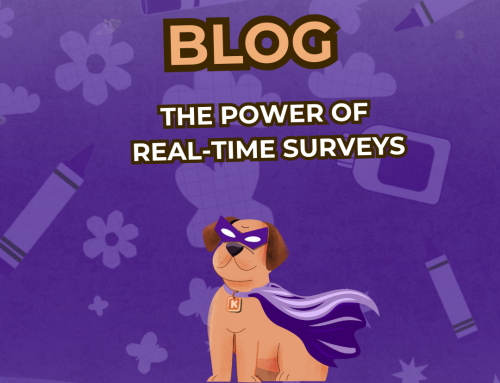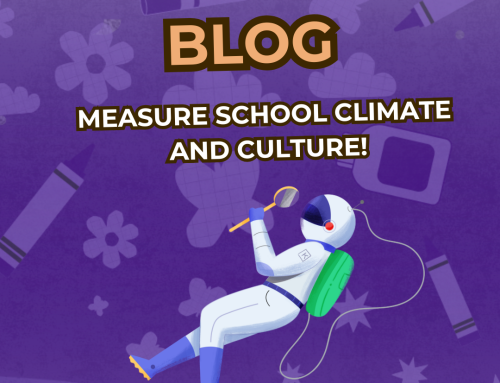How to Elevate and Measure Student Voice in Schools: A Complete Playbook
For district leaders, principals, counselors, and student support teams

What You Need to Elevate Student Voice in Schools
This guide helps you create a school culture where students are heard, their input matters, and their feedback shapes real decisions. Based on research and real examples, it includes:
✓ Research-based survey questions on student voice in schools
✓ A case study from Vallecito Union SD
✓ A step-by-step roadmap to act on student feedback at scale
Understanding Student Voice in Schools
Student voice in schools goes far beyond student council or an occasional suggestion box. It means giving students regular opportunities to share their opinions and influence the decisions that affect them, whether it’s the lunch menu or classroom rules.
When students feel heard:
-
They become more engaged
-
They build stronger self-advocacy skills
-
Their sense of belonging and motivation grow
-
Trust between students and adults improves
Importantly, giving students a voice doesn’t mean giving up control. Instead, it’s about building ownership and collaboration within the learning environment.
Why Measuring Student Voice in Schools Matters
The Missed Opportunity: When Adults Guess Instead of Ask
At Avery Middle School, the food services manager wanted to improve the lunch menu. They planned to use paper surveys and count all 115 responses by hand.
However, the principal recommended a better approach: using Kelvin Pulse to gather student feedback directly and instantly.
The Results Were Eye-Opening
The food item that adults assumed would be most popular… wasn’t. Students chose something entirely different. While parents advocated for healthier choices, students told a more complex story.
Case Study: How Avery Middle School Amplified Student Voice
Start by Asking the Right Questions
Using Kelvin Pulse, staff created a custom checkbox survey with 28 menu items. Students picked their top 10 directly on their Chromebooks.
Then, Uncover Real Insights
The data challenged expectations. Students’ top choices didn’t align with adult assumptions. As a result, the school found a way to balance nutrition goals with what students actually wanted to eat.
Finally, Take Informed Action
-
Students helped shape the next year’s menu
-
The district aligned the data with LCAP wellness goals
The Impact:
-
Higher student engagement
-
Likely reduction in food waste
-
Clear metrics for LCAP reporting
-
Saved time and effort (no manual tallying)
“This was super quick, super simple, and gave us reliable data straight from the source… It was a no-brainer.”
— Scott Nicotero, Principal, Avery MS
“We can make great food, but if it goes in the trash and kids aren’t eating it, it’s not having the impact that we all want.”
— Tom Hoskins, Superintendent, Vallecito Union SD
Sample Survey Questions to Capture Student Voice
Use these for a general check-in or targeted decision-making:
General Voice Questions:
-
“At this school, students have a say in decisions that affect them.”
-
“Adults at this school listen to students’ opinions.”
-
“I feel comfortable sharing my ideas with adults at this school.”
Specific Input (food, dress code, events):
-
“What school activities would you like to see more of?”
-
“Which lunch options do you enjoy most?”
-
“If you could change one thing about your school, what would it be?”
🛠️ Pro tip: Use Kelvin’s comment feature to gather richer feedback.
Why Use Kelvin for Student Voice in Schools
Kelvin makes it easy to:
-
Send custom surveys in minutes
-
Get clear, actionable results
-
Gather insights across classrooms, schools, and districts
-
Track progress over time
Student voice shouldn’t be a one-time event. Kelvin helps make it part of your school’s regular feedback loop.
Your Step-by-Step Implementation Guide
Week 1: Launch Your First Voice Pulse
-
Pick a topic where student input matters (e.g., food, events, classroom culture)
-
Build your custom Pulse with help from your CSM (email: [email protected])
-
Send it out — keep the window short (2–3 days) to increase participation
Week 2: Analyze & Act
Next, view the results immediately — no need to wait for long reports.
Then, meet as a team to understand the responses and decide on 1–2 real actions you can take.
Most importantly, let students know what you heard and what will change.
Weeks 3–4: Measure the Impact
After that, re-run a quick Pulse to measure how things shifted.
Look for early wins — more engagement, better morale, positive student chatter.
Finally, share the results with families and the district.
Make Student Voice a Habit
Don’t stop after one survey. Regular check-ins (monthly or quarterly) help students feel heard consistently, while giving your team the data needed to make informed decisions.
Getting Started with Student Voice in Schools
The best time to start is now.
✅ Book your free 15-minute discovery call
✅ Connect your SIS in minutes
✅ Launch your first student voice Pulse
Every student has something to say. Kelvin helps you hear them — and take action that matters.
References
-
Mitra, D. L. (2004). The significance of students: Can increasing “student voice” in schools lead to gains in youth development? Teachers College Record, 106(4), 651–688.
-
Cook-Sather, A. (2006). Sound, presence, and power: “Student voice” in educational research and reform. Curriculum Inquiry, 36(4), 359–390.
-
Quaglia Institute. (2014). My Voice National Student Report




